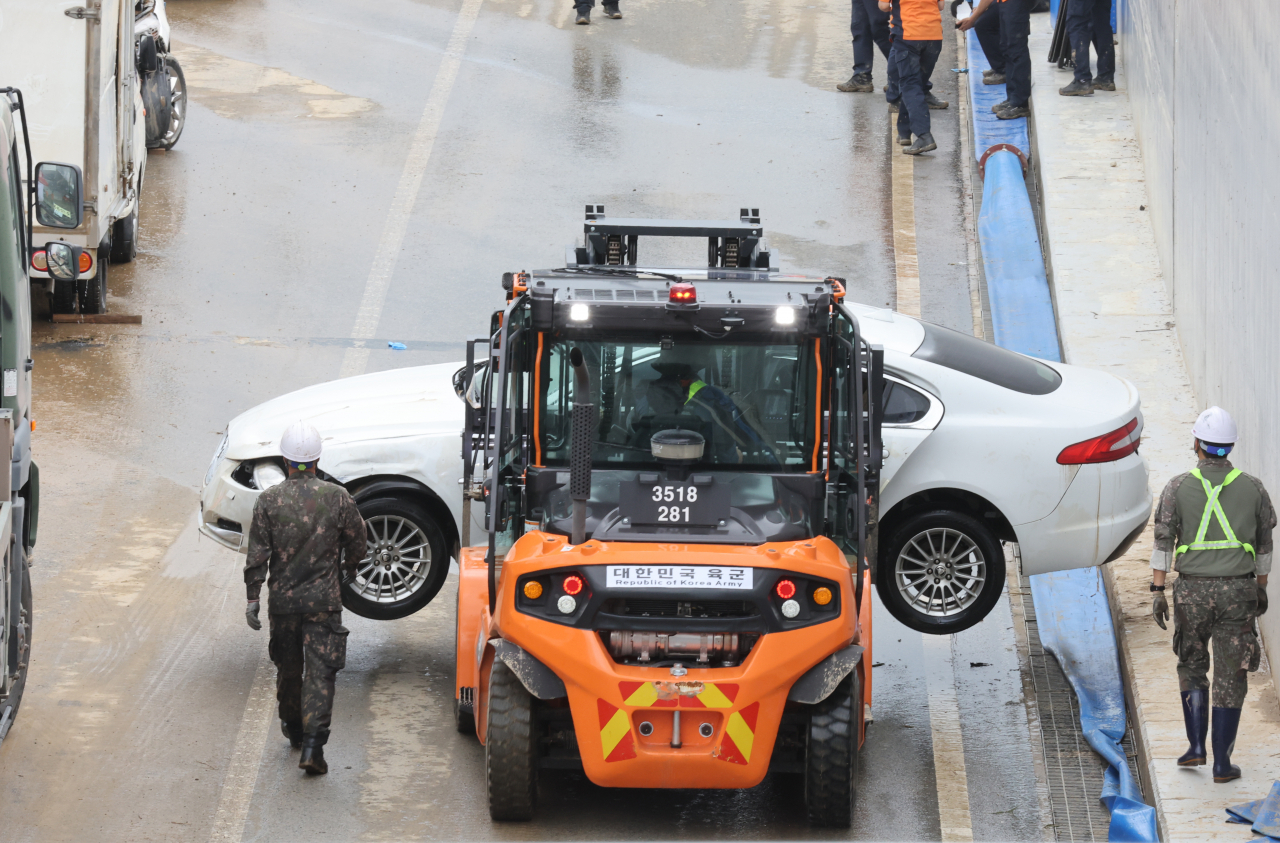[KH explains] How to stay safe driving through flood water
Experts warn of EVs shutting down once water seeps into battery packs
By Byun Hye-jinPublished : July 19, 2023 - 14:59

Flooding due to monsoon rains in South Korea has resulted in dozens of casualties this week, raising the issue of vehicle safety during storms. Drivers need to take extra care and be vigilant to avoid getting trapped in submerged cars, according to experts.
“It is recommended to reduce speed, almost by 20 percent of the speed limit to prevent the car from skidding on wet roads,” said Lee Ho-geun, a car engineering professor at Daeduk University.
“Also, keep longer stopping distance between you and the car ahead than usual and avoid sudden acceleration or braking.”
Inflating tires 10-15 percent more than usual levels or replacing them are safe ways to prepare for driving in inclement weather and protect yourself from possible car accidents, Lee added.
A car can become easily submerged while driving downhill, so it is important to avoid driving into underpass or tunnels once the driver notices high water levels on the roads, said an official from the Korea Transportation Safety Authority.
The official recommended drivers move cars to higher ground if flood waters exceed two-thirds of the tire.
“If you mistakenly drove the car into a submerged area and the engine shuts down, hit the push-button start key to open the car’s windows or a sunroof in order to swiftly get out of the car,” the official added.
If the car window does not open, prepare to break it with an emergency hammer or seat belt buckle.
“Rolling down the window a little bit before it sinks makes it easier to break the window. Do not panic if it doesn’t shatter. Wait till the difference between the water level inside and outside of the car falls below 30 centimeters and try to open the door,” the official said.
Once having escaped from the car, go to higher ground and call 119 for help, the official added.
Experts also stressed that drivers' response should be different for internal combustion engine cars and electric or hybrid vehicles.
“Do not turn the engine on a gas-powered car if it’s inches away from sinking. If possible, shift the gear to neutral and push it to a visible area where it could be towed away,” said Lee Il-kwon, a car engineering professor at Daelim University.
“You could also open the engine room and disconnect the negative battery cable to cut the power and prevent further damage to the car.”
EVs or hybrid cars with gas engines and electric motors, on the other hand, might leave few options for salvaging.
“Your EV might drive for some time after it has submerged. But once the water gets into battery packs, it’s a matter of time before the power shuts down. It is better to turn the engine off and escape from the car. Be careful not to touch the orange-colored high-power cable or connector,” Lee added.
Insurance experts also suggest considering add-ons beyond the basic car insurance plan beforehand.
“The (extra) insurance covers the repair cost of the damaged car if it was flooded during driving or submerged due to storms or floods while parked,” said an official from Samsung Fire & Marine Insurance.
“So after repairing the car, you need to keep the receipts and submit it to the insurance company. Also, find out if there are further damages (on your car) for a while because submerged cars are likely to have additional problems.”
However, the official cautioned that the added insurance might not cover damages under certain conditions, such as if the driver left the car window or sunroof open, or if they drove or parked in a frequently flooded area.



















